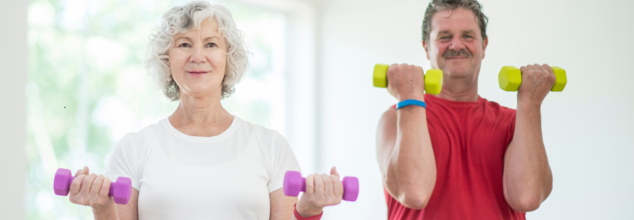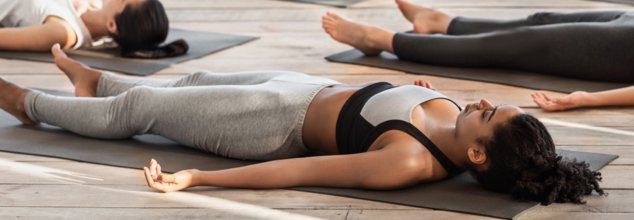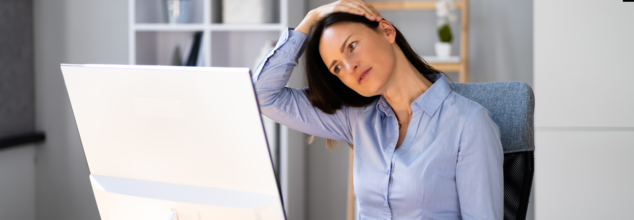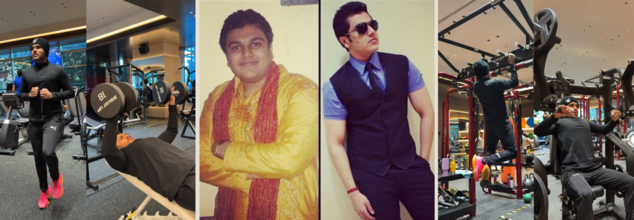- Health Conditions A-Z
- Health & Wellness
- Nutrition
- Fitness
- Health News
- Ayurveda
- Videos
- Medicine A-Z
- Parenting
- Web Stories
How Bicep Curls Reduce High Blood Pressure?

Bicep Curls & Blood Pressure (Credit- Canva)
Social media has recently seen a rise in people who go to the gym and share their fitness journey with the masses. They show what kind of exercises they do and what kind of diet is necessary for it. It is a good habit to incorporate in your life as there are many health benefits of it. It helps you maintain your health as well as push back any age-related illness people experience like inflexible joints, back pain and studies have even shown that it delays any cognitive decline they may face as well! But who would have thought that a simple static muscle contraction could have a significant impact on blood pressure? Isometric resistance training (IRT), a form of exercise that involves contracting muscles without movement, has emerged as a promising strategy for managing hypertension.
What Are Isometric Exercises?
When you perform an isometric exercise, like holding a weight in a fixed position, your muscles contract forcefully without changing length. This intense contraction triggers a physiological response, leading to increased blood flow and the release of nitric oxide. Nitric oxide is a powerful vasodilator, meaning it relaxes blood vessels and improves blood flow. By consistently engaging in isometric exercises, you can help lower blood pressure and improve cardiovascular health.
According to the National Library Of Medicine, Isometric training, a form of exercise involving muscle contraction without visible movement, has been employed in various settings, including rehabilitation, sports performance, and general fitness. However, a clear consensus on optimal training protocols for specific outcomes remains elusive.
How Does It Help High Blood Pressure?
According to this 2019 study, high blood pressure is a major global health concern. While traditional treatments like medication are effective, there's growing interest in non-pharmacological approaches. Isometric resistance training (IRT) has emerged as a promising strategy for lowering blood pressure. A recent systematic review and meta-analysis assessed the safety and efficacy of IRT in individuals with elevated blood pressure. The study found that IRT can lead to significant reductions in both office and central blood pressure, as well as 24-hour diastolic blood pressure.
Importantly, the review also revealed that IRT is safe, with a very low risk of adverse events. While more high-quality studies are needed to strengthen the evidence, these findings suggest that isometric exercise could be a valuable tool for managing hypertension, particularly when combined with other lifestyle modifications.
In an interview with WebMD, Dr. Neil Smart, a professor from the University of New England in Australia, attempted to help us understand why it exactly works. Basically, our body does not enjoy the isometric hold. As soon as you stop squeezing your blood flow will be normalized and get triggered, when the red blood cells rush against the blood vessel walls, it releases nitric oxide, which causes vessels to dilate.
How To Do Isometric Bicep Curls?
Take a bicep curl, for example. In a traditional bicep curl, you lift a weight, contracting and extending your bicep muscles repeatedly (these repetitions are called "reps"). This movement-based exercise falls under the category of traditional resistance training. Isometric exercises, on the other hand, involve holding a muscle contraction in a fixed position. Think about holding a weight halfway through a bicep curl and maintaining that position for several seconds. Your muscles are engaged, but there's no movement. By incorporating isometric exercises into your routine, you can reap the health benefits they offer, including potentially lowering blood pressure.
Stressed And Insomniac? Yoga Poses That Can Help You Sleep Better

(Credit-Canva)
Yoga is a great way to connect your mind and body. It helps us process our body’s well-being through gentle and flow-based movements, allowing us to have a relaxing and stress-free time. When you are doing yoga, you are told to be conscious of your breathing and focus on your surroundings. That helps one feel collected and focus better.
It is very easy to get caught up in stressful situations, causing anxiety and distress to people. This has a negative effect on your body and can manifest in ways like acne, headaches, fatigue as well as insomnia. When one is feeling these things, the best way to cope with these issues is by doing yoga.
Can Yoga Really Help with Insomnia?
A 2020 review published in the BMC Psychiatry, found that yoga generally helped women with insomnia sleep better. The researchers noted that it seemed particularly helpful for women experiencing menopause.
While not every study in the review showed a positive effect from yoga, they all agreed that yoga didn't have any bad side effects. This suggests that trying yoga for sleep is a safe first step before considering other treatments. Another review in 2019 also found that mind-body practices like yoga significantly improved sleep problems in previous research.
Yoga Asanas That Can Help With Insomnia
Legs Up The Wall (Viparita Karani)
Start by sitting sideways near a wall with your legs straight. As you breathe out, lower your upper body to the floor and lift your legs up against the wall. Keep your arms relaxed by your sides, palms up. You can use a pillow under your lower back for comfort. To stretch your inner thighs more, let your legs gently fall open while they are still resting on the wall.
Child’s Pose (Balasana)
Kneel on the floor with the tops of your feet flat. Bring your knees and feet together so your big toes touch. Sit back gently on your heels. Lean forward and fold your upper body over your legs until your forehead touches the floor or gets close. You can rest your arms by your sides or stretch them forward. Breathe calmly and stay in this comfortable position.
Reclined Butterfly Pose (Supta Baddha Konasana)
Lie comfortably on your back with your legs and arms straight. Bend your knees and bring your feet towards your body, letting the soles of your feet touch. Gently bring your clasped hands to rest on your stomach. Stay in this relaxed position and focus on your natural, easy breathing.
Corpse Pose (Savasana)
This is a great pose to end your yoga practice and can also be used for quiet meditation. Lie flat on your back with your legs and arms straight and relaxed. Let your hands be open with palms facing up, and allow your ankles to gently fall open. Take a deep breath and consciously relax all the muscles in your body. Keep your attention on your breath. To finish, gently move your fingers and toes, then slowly roll to one side and sit up.
Can Exercise Really Undo The Damage of A Sedentary Desk Job?

Credits: Canva
Let's get real: Most of us are basically glued to our desks. With work, meetings, and screen-intense tasks taking up the bulk of our day, the side effects of a sedentary life have never been more apparent or more alarming. From creaking backs to cricked necks, stiff shoulders to compromised cores, the "desk job slump" is more than a buzzword, it's a contemporary health crisis but here's the million-dollar question- Can working out actually reverse all that harm?
How Sitting Impacts the Body?
We always downplay the extent to which sitting impacts our bodies—until the ache begins. Prolonged sitting results in contracted hip flexors, tightened shoulders, rigid necks, and flattened spinal discs. Throw poor posture and ergonomic-deficient chairs into the mix, and you have the makings of a musculoskeletal ache.
Long-term consequences extend well past aching muscles and joints. Too much sitting, particularly greater than 7–11 hours a day, has been connected with an increased risk of type 2 diabetes, cardiovascular disease, circulatory problems, varicose veins, and even early death, as a study at the University of California, San Diego, found.
Your eyes? They're not left out either. Screen time tends to cut back on blinking, which causes dry, irritated eyes and eye strain. And don't forget the wrists—typing, particularly without ergonomics, can create or exacerbate carpal tunnel syndrome.
Is the "Posture Fix" A Myth?
Before you're in a hurry to purchase a posture corrector or foam roller, it's worth asking: Is posture really the issue—or just a symptom?
Experts indicate that the need to "fix" posture isn't always driven by medical need. If you're not in pain or discomfort, you may not need to do anything drastically different. But if you are in chronic pain, there's a more nuanced conversation to be had.
Poor posture tends to be a whole-body problem, linked to the way your core works, how you breathe, and the alignment of your pelvis. That is, adding a brace isn't going to fix years of not moving or biomechanical imbalance. Rather, the answer is in movement.
Can Exercise Reverse the Damage?
Though regular physical activity is vital, more recent studies—and the UCSD report—emphasize that it might not completely offset the dangers of too much sitting. Even people who had reached everyday movement guidelines still had higher mortality rates associated with prolonged sitting time.
A 2019 study concurred, reporting that greater levels of moderate-to-vigorous physical activity didn't eliminate the heightened risk of chronic diseases such as heart disease and stroke that are associated with excessive sitting.
So, should you still exercise? Yes—think of it as part of an overall plan. Think of exercise as one support column of prevention, not a magic pill.
How Much Sitting Is Too Much?
The UCSD study establishes the danger zone at 11 hours a day, but other studies indicate that 7 hours is already too much. Scarily, sitting for over 30 minutes straight can send blood sugar and blood pressure through the roof.
So what's the medication? Shatter the sitting pattern regularly. Adopt sit-stand desks, schedule walking meetings, stretch on phone calls, or stand for commercial breaks during TV viewing at home. If your smartwatch buzzes hourly, it's giving you a blessing.
Posture-Friendly Movement Habits That Work
If you're slumped over your keyboard with the posture of a shrimp who's been boiled to death, incremental, mindful movement during the day can bring lasting change.
Instead of high-impact exercises that put more tension on a body already wound up, explore low-impact, posture-oriented regimens. Aerial yoga, Pilates, and functional mobility training are wonderful for reversing muscle tension and engaging the core.
Tight all the time or experiencing nerve discomfort? It's time to book an appointment with a physiotherapist or movement specialist. They can customize exercises for your personal biomechanical requirements and reveal postural imbalances that generic workouts will miss.
Don't simply "add" exercise to your inactive day—reframe your day in terms of movement. That involves working micro-movements into everyday tasks, rearranging your space to accommodate standing or stretching, and valuing functional mobility.
We are living in a time when convenience seems to outpower movement, but our bodies were meant to move—not be sedentary. Until workspaces and home spaces catch up, we have to take matters into our own hands and reclaim that movement wherever we can.
Exercise, including all its many benefits, won't repair sedentary damage on its own. The best approach is to split up sitting time, incorporate daily functional movement, and pay attention to how you posture yourself during the day—not when you're at the gym.
The next time your body is folding itself into your desk chair, keep moving in mind- you don't have to do a thing more than get moving to the extent that it matters.
Real-Life Weight Loss Story: From 104 Kg To 74 Kg, How This Mumbai-Based Man Lost 30 Kgs In 15 Years

Credits: Rohit Boda Instagram
We have all come across Instagram reels that targets working professionals to lose weight. Of course it is difficult, as most of our time and energy is spent at work, on the office desk. By the time we get back home, we are almost drained out, and we reward ourself with a quick snack. While this may make us happy, this also becomes a hurdle in our journey to achieve our weight goals.
As per the Weight Management: State of the Science and Opportunities for Military Programs, published in the National Library of Medicine, busy lifestyles and hectic work schedules create eating habits that may contribute to a less than desirable eating environment.
Another 2019 review from BMJ Open provides that with busy lifestyle and age, especially after crossing 30, there is also a lack of willpower which becomes a hurdle in achieving your weight goals. However, it does not mean that it is not possible.
Rohit Boda, 34, the Group Managing Director of JB Boda Group has shown the worked that it is in fact possible. You can love your work, be busy with work, and still work on yourself to stay fit! His journey however points towards one key direction, that there is no shortcut to weight loss journey. One has to be patient and honest with themselves, as for him, it took him 15 years of discipline to shed 30Kgs.
Want to know how he managed to lose weight and achieve his weight goals? Here's edited excerpts from the interview:
What was the turning point in your fitness journey that made you decide to prioritise your health over everything else, especially considering your demanding career?
A lack of attention to health and fitness dominated much of my youth. Physical activity and fitness were not strong priorities in those early years. Over these early years, the focus on health, fitness, and being in shape was not constantly on my mind. The ordeal of discovering that suits didn't fit me properly was actually alarming and acted as a harsh pointer towards my fitness. This wake-up call worked as a stimulant for me.
In the past 13 years, I’ve been contributing to my family’s legacy business and entered the world of entrepreneurship. As a result, I began balancing my fitness and work. In this period, I also made it a point to incorporate a wide variety of physical activities, such as strength training to develop lean mass and functional strength, as well as cardio and engaging activities like Pickleball in order to maintain consistency in my fitness journey.
What were the biggest challenges you faced during this transformation, and how did you stay disciplined despite those setbacks?
The journey from 104 kg to 74 kg was not a linear path but more like navigating a road with its fair share of bumps and detours. Spanning 15 years, the biggest challenge wasn't just the physical aspect of losing weight, but the mental and emotional shifts required for sustained change.
At first, breaking old habits was tough. There were times when I wanted to eat unhealthy things, times when my weight didn't change even with effort, and days when I was tired from work and just wanted to skip exercise.
First, I focused on feeling stronger and more energetic, not just the number on the scale. Feeling good was a bigger motivator.
Second, I aimed for consistency, not being perfect. If I made a mistake one day, I just tried to do better the next. It was about making progress, no matter how small.
Furthermore, I incorporated variety into my fitness routine, like mixing resistance training, HIIT, outdoor games, and cardio; all these kept things engaging and prevented burnout.
Tracking my progress also provided a sense of accomplishment and fuelled my motivation. Ultimately, it was about cultivating a mind set that viewed fitness not as a temporary diet or exercise plan, but as an integral and enjoyable part of my lifestyle.
Many people today turn to weight loss medications like Ozempic. Did you ever consider using it as a shortcut to your goal?
I never really thought about using weight loss drugs like Ozempic as my main solution. For me, getting fit was always about making lasting lifestyle changes. I wanted to achieve this through my own hard work and build a healthy foundation that would last. There's a good feeling that comes from knowing you did it yourself. For me, that feeling was much better than taking a shortcut.
Can you walk us through your fitness regimen today? How do you balance strength training, mindful nutrition, and overall wellness in your day-to-day life?
I do strength training a few times a week. This helps me build muscle, which is important for strength and burning calories.
I also do fast workouts (HIIT) to keep my heart healthy and build stamina. To make it fun, I like doing outdoor things like a quick jog or playing Pickleball. Eating mindfully is also key.
It's not about strict diets, but about choosing healthy foods that give me energy throughout the day.
I pay attention to how different foods make me feel and try to eat what my body needs.
Besides exercise and food, feeling well overall means getting good sleep and rest. I make sure to sleep enough because it helps my muscles recover, balances my hormones, and keeps my mind clear.
I also do light exercises like stretching to prevent injuries and stay flexible. The main thing is to stay active in ways that are exciting, challenging, and that I can keep doing in the long run.
Were there any habits or lifestyle changes that you initially struggled with but later found to be the key to your success?
There were a few things that were hard at first, but became really important for my success. One of the key challenges, especially in the demanding world of entrepreneurship, was consistently prioritising enough sleep.
The real change happened when I started focusing on eating balanced, healthy foods and realising that it was okay to enjoy treats sometimes, as long as most of the time I was eating well.
I was so eager to get fit that I sometimes pushed myself too hard without enough rest. Understanding that rest days and light exercises like stretching were important for my body to recover helped me make progress in the long run and avoid getting burned out.
How did you manage to maintain muscle while shedding fat, and how important has strength training been in your journey?
While the initial goal might have been weight loss, I quickly realized that simply aiming for a lower number on the scale wasn't the complete picture. Building and maintaining muscle while shedding fat became a significant focus, and strength training has been absolutely paramount in this journey. The key to maintaining muscle during a calorie deficit (which is often necessary for fat loss) lies in consistently challenging your muscles through resistance training. By lifting weights or doing bodyweight exercises, you send a signal to your body that this muscle tissue is needed and should be preserved. Without this stimulus, your body might be more inclined to break down muscle along with fat for energy.
For others who might be juggling a busy career with their health goals, what would you say is the most important piece of advice for maintaining consistency and discipline in their own fitness journeys?
My advice would be to start small and focus on building sustainable habits rather than striving for immediate perfection. The most important thing is to be consistent. Small, regular efforts add up over time and make a big difference. Be kind to yourself, and remember that every small step you take towards your health is a win.
© 2024 Bennett, Coleman & Company Limited

